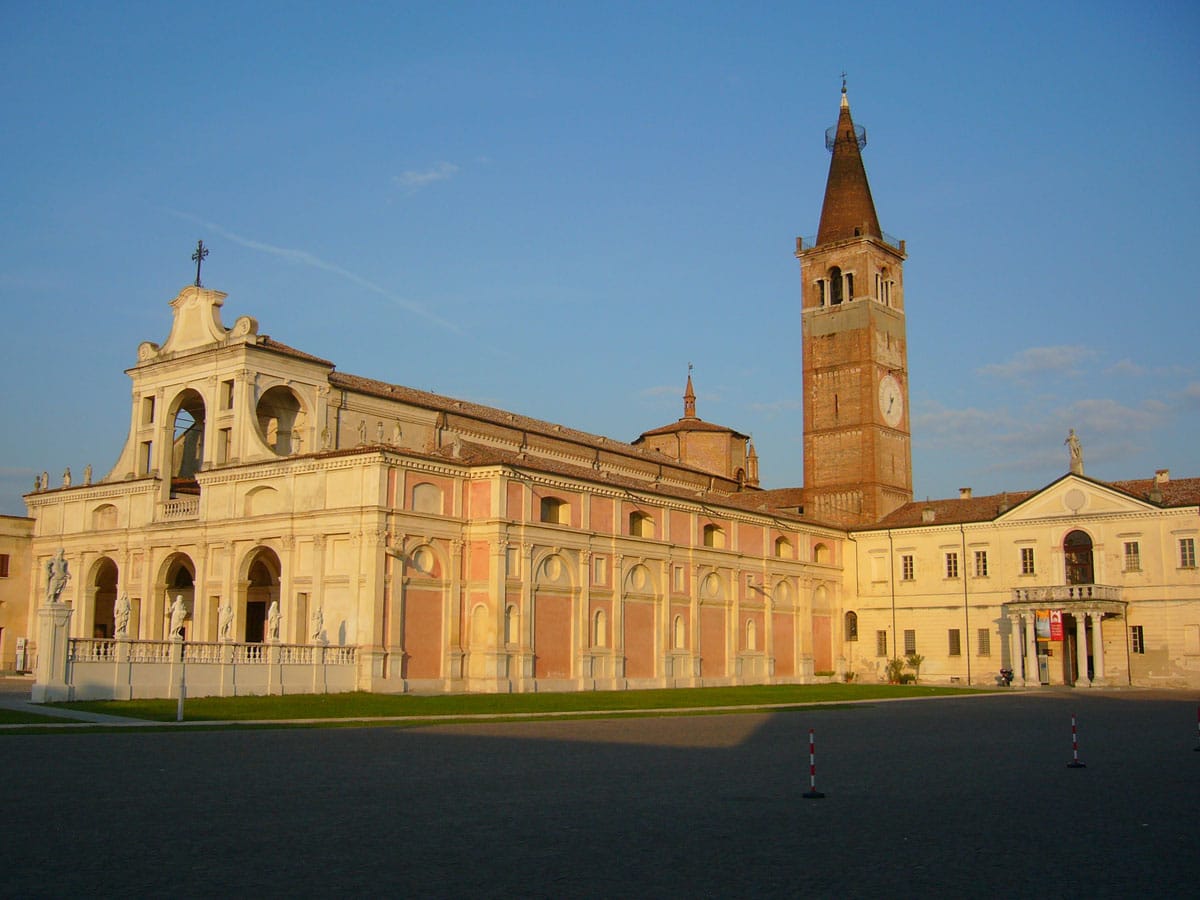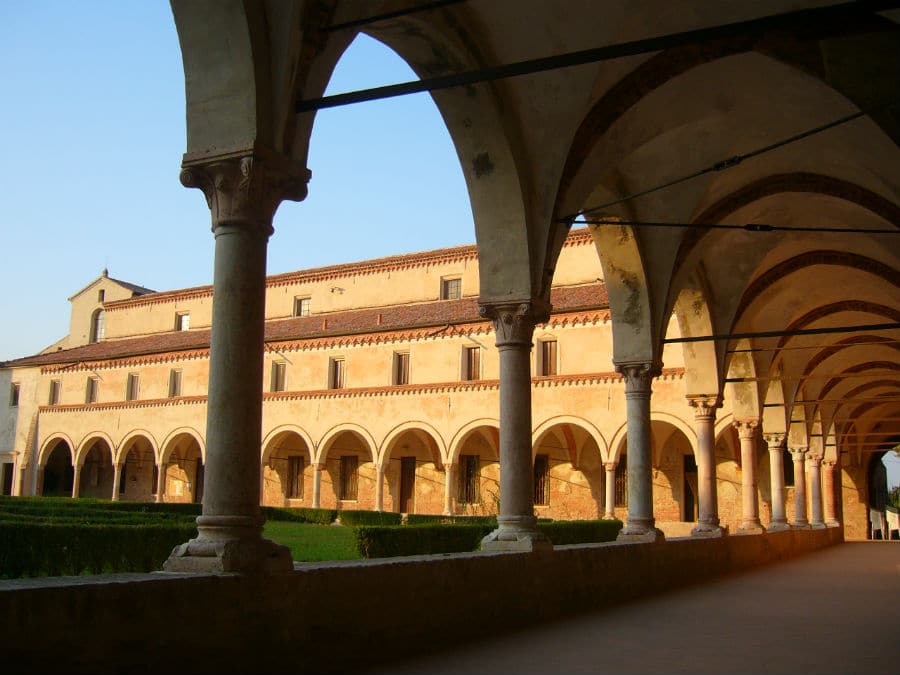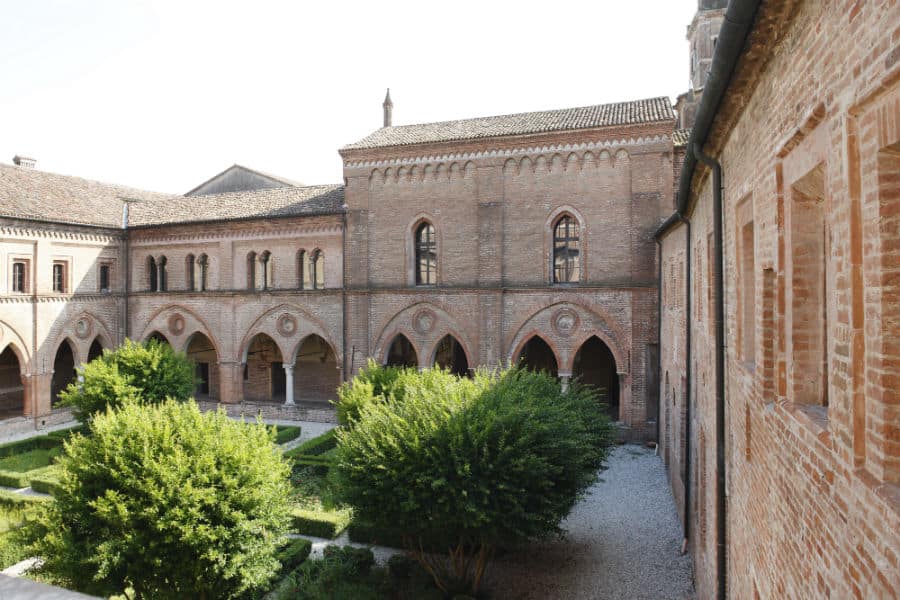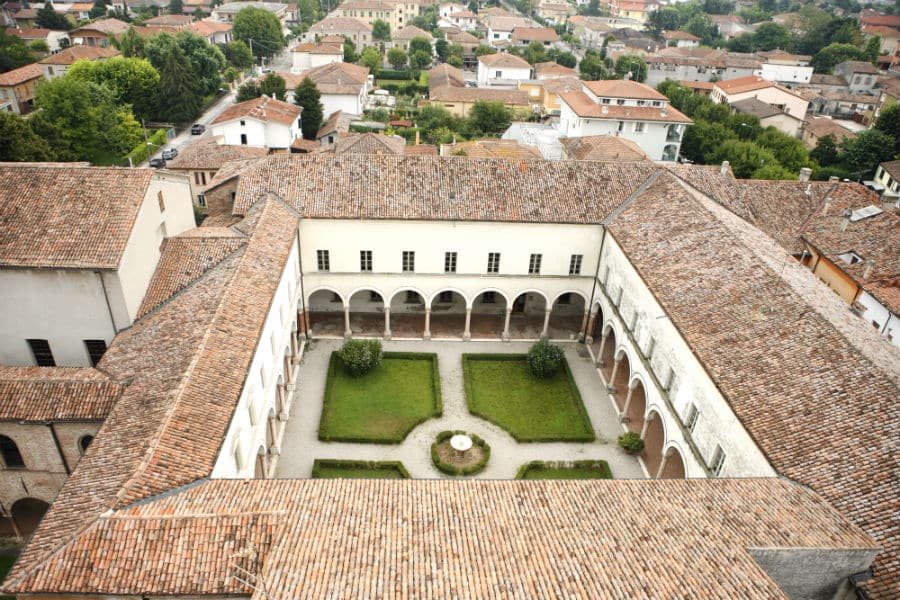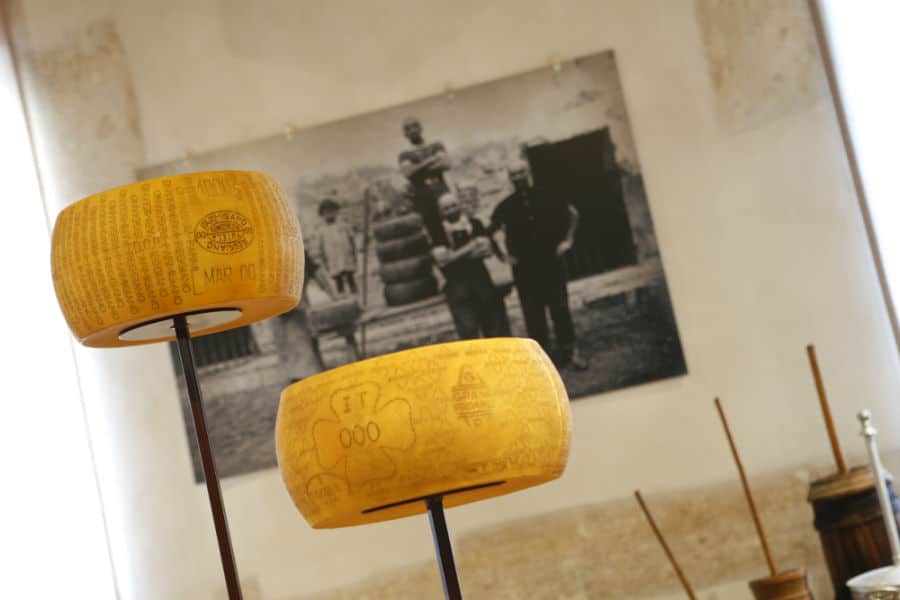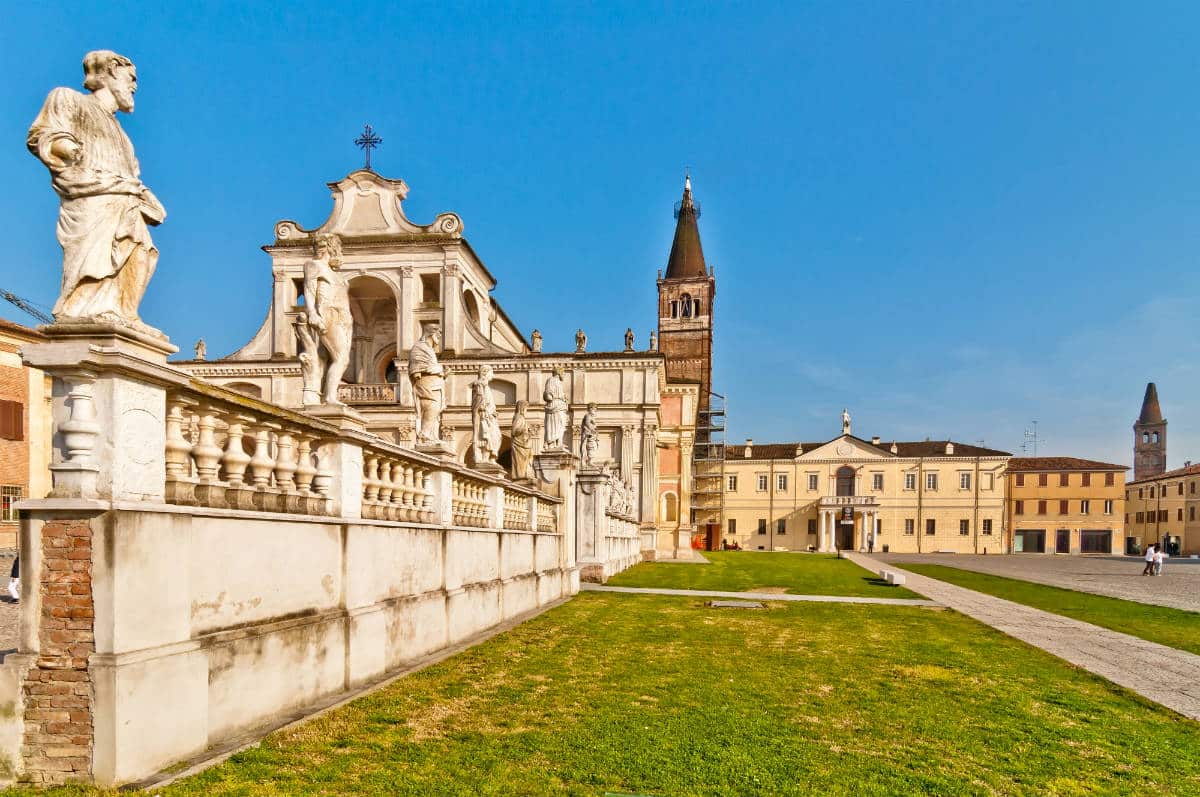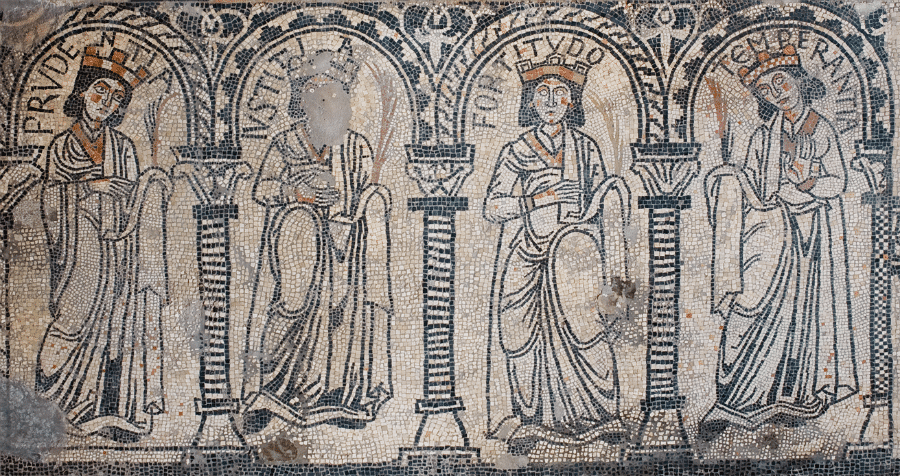San Benedetto Po, located a few kilometers from Mantua, is a village rooted in a centuries-old history linked to one of the most important monasteries in medieval Italy: the Abbey of Polirone. Founded in 1007 by Tedaldo di Canossa on the island between the Po and Lirone rivers, this abbey was a spiritual, cultural and political center of reference for nearly eight centuries. Until its suppression in 1797 at the hands of Napoleon Bonaparte, Polirone played a key role in the European monastic scene, linking with the great abbeys of Cluny and Montecassino, and becoming one of the crucial points of medieval culture.
The history of San Benedetto Po is inextricably linked to that of the monastery, and the village, once known as San Benedetto in Polirone, developed around this monastic complex. Today the village is a place of interest for both pilgrims in search of spirituality and art and history enthusiasts, thanks to its rich cultural heritage and the charm of a landscape that preserves intact many of the elements that have made it famous.
A visit to the village begins by entering the ancient monastery square, which has remained intact in its medieval dimensions. In the center of the square stands majestically the Abbey Basilica, a masterpiece of Renaissance architecture designed by Giulio Romano between 1540 and 1545. Inside, the basilica preserves a wonderful fusion of architectural styles, with the old Romanesque and Gothic structures harmoniously coexisting with more modern elements, creating a sacred space of extraordinary beauty. Here, visitors can admire not only the impressive architecture, but also the religious history of the place, which has been home to prominent historical figures, such as Martin Luther and Paul III, and has seen the passage of artists such as Correggio and Giulio Romano.
Continuing the visit, the Cloister of the Seculars welcomes visitors with its calm atmosphere. This was the place where pilgrims and strangers were welcomed, a point of passage where the spirituality of the monastery blended with the daily life of the village. Climbing the 17th-century staircase built by Giovan Battista Barberini, one arrives at the Museo Civico Polironiano, which offers a comprehensive overview of the history of the monastery and the village. Here, you can explore the historical artifacts and works of art that tell the story of the life of the monastery and the monks who made its history.
But the visit does not end there. The Cloister of San Simeone, with its late Gothic appearance, dates back to the period between 1458 and 1480 and is a fascinating place that still retains the beauty of its original architecture. Next to it is the Chapter House, an important management center of the coenoby, where the monks made crucial decisions for the life of the monastery. The third cloister, the Cloister of St. Benedict, is located adjacent to the basilica and is another striking space, where the serenity of the place invites meditation.
One of the most interesting parts of the monastery is the monastic refectory, an imposing building overlooking Piazza Matilde di Canossa. This refectory was commissioned by Gregorio Cortese, who called two very talented artists, Girolamo Bonsignori and Correggio, for its decoration. The canvas of the Last Supper, painted by Bonsignori and inserted into the architecture painted by Correggio, is one of the monastery's most valuable artistic elements.
Beneath the Refectory extend the 16th-century Cellars, which now house a rich collection of farm wagons. These wagons are evidence of the link between the monks and the surrounding territory, which was reclaimed thanks to the tireless work of the monastery's inhabitants. The industriousness of the monks is also visible in the surrounding landscapes, characterized by oratories, abbey villas, parish churches and agricultural courts that tell the story of the transformation of a wild territory into one of the most prosperous agricultural areas in Italy.
In addition to the monastery, the landscape of San Benedetto Po is extraordinarily beautiful. The Po River, which flows slowly past the village, lends an atmosphere of serenity and peace to the place. The floodplain park, with its waterworks, embankments and rows of poplars, is an ideal place for a walk surrounded by nature. The small churches scattered throughout the area and the views of the river make San Benedetto Po an ideal destination for those seeking the tranquility of the Lombardy countryside.
Finally, the history of San Benedetto Po is intertwined with that of the great figure of Matilda of Canossa, who rests in an alabaster sarcophagus inside the monastery. Matilda, one of the most influential figures of the Middle Ages, contributed significantly to the history of the monastery and the village, which still bear her name and memory. Her connection with the monastery is deep, and her tomb represents one of the most significant historical landmarks in San Benedetto Po.


